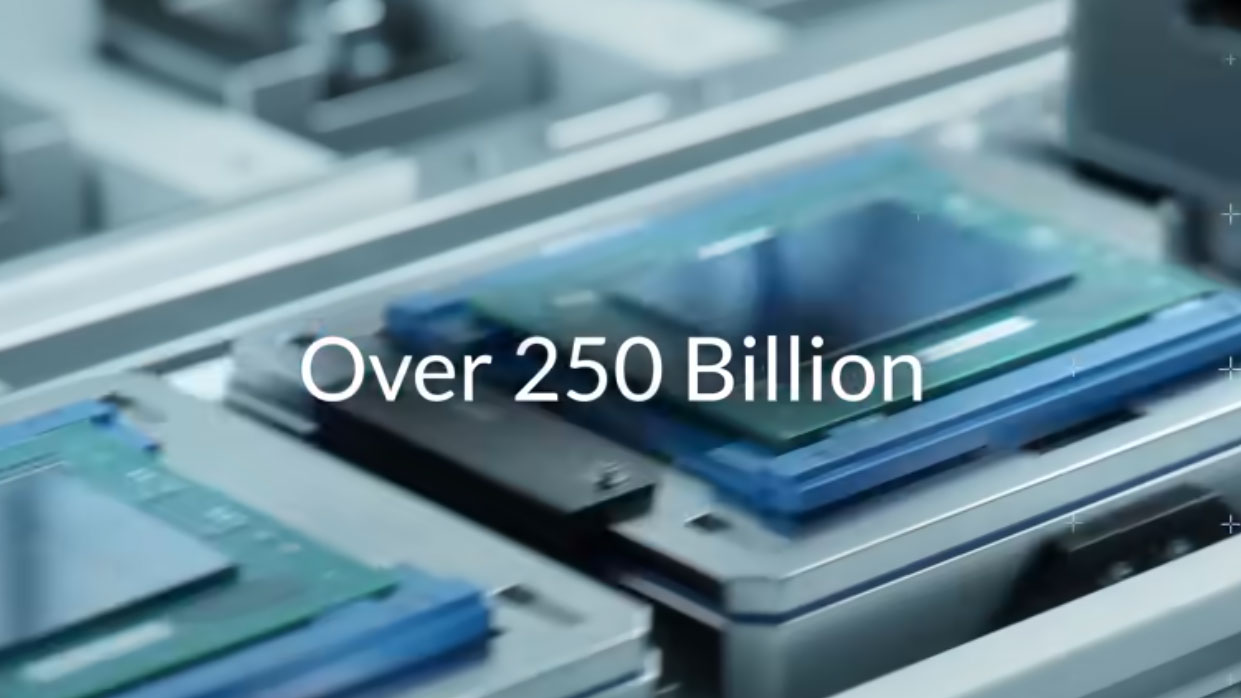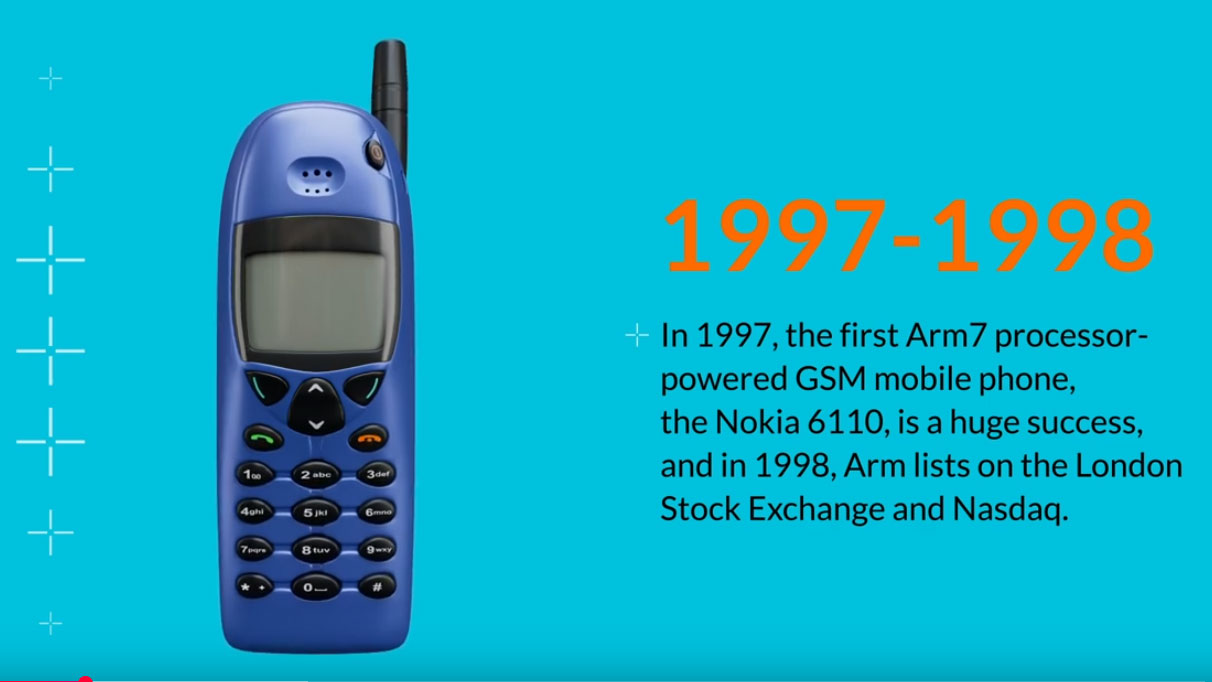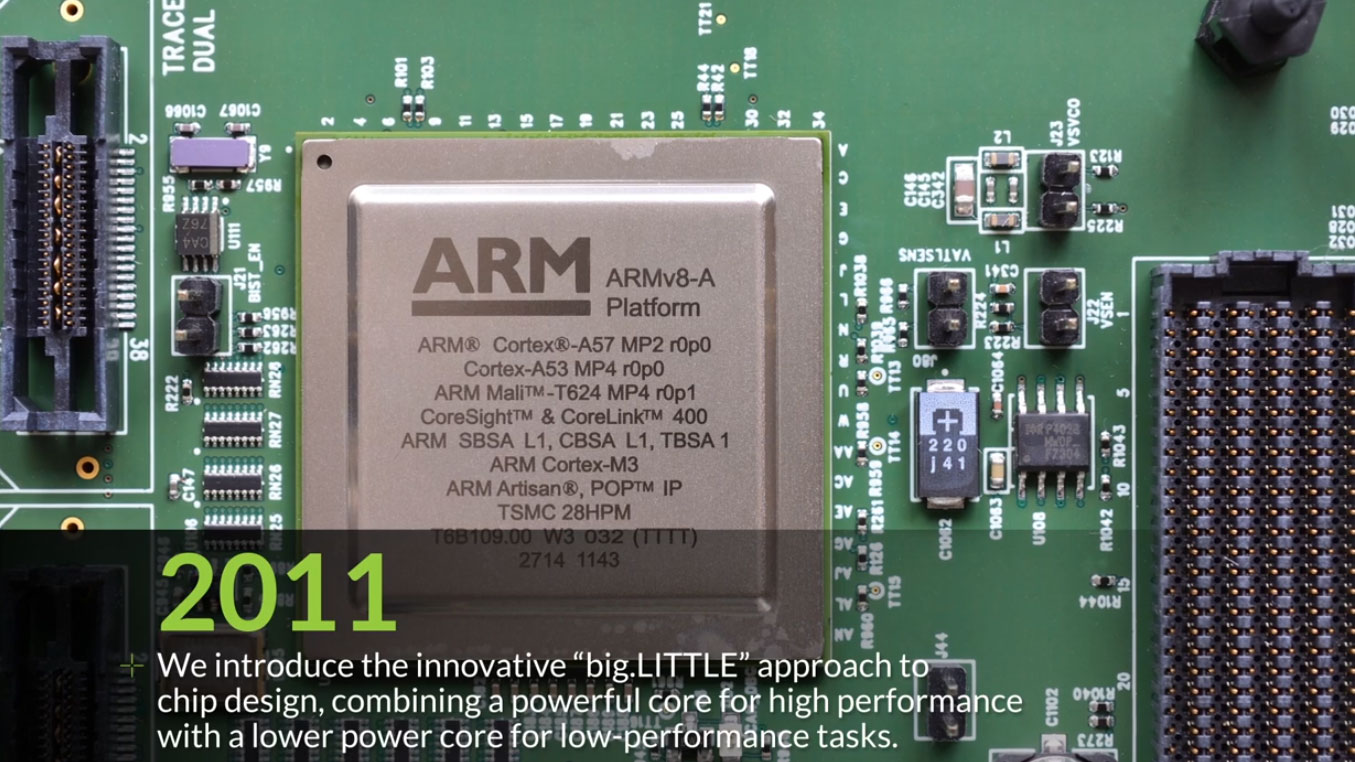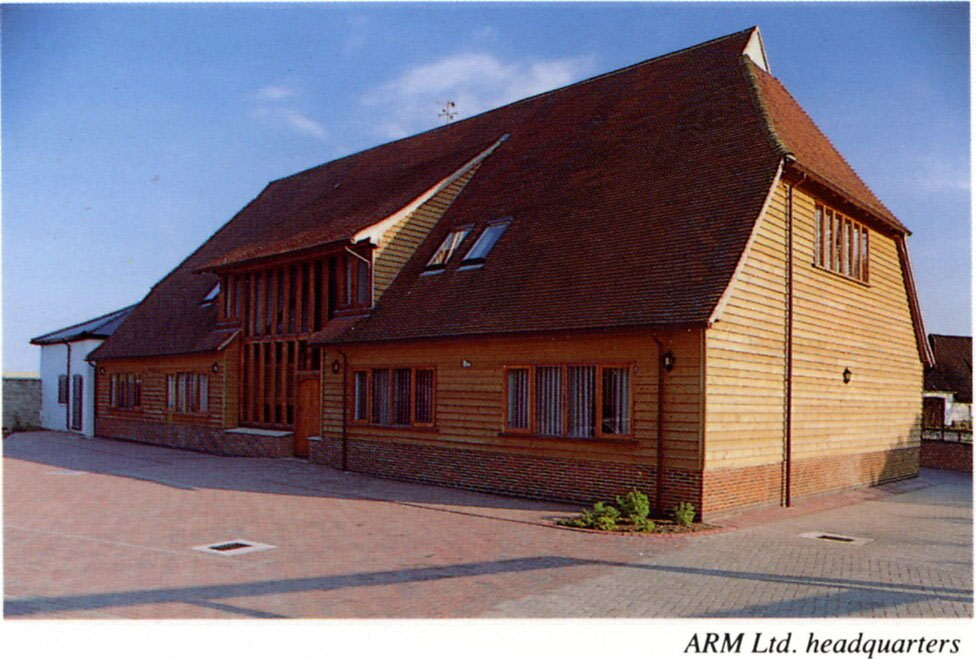Over 250 billion Arm chips have shipped since the first ARM1 processor launched 40 years ago
Promised 'MIPS for the Masses' then delivered.

The first Arm processor was created in Cambridge in 1985. From humble origins and with limited resources, the ARM1 was designed to power the new Acorn Archimedes computer systems. The ARM1 featured 6,000 gates, while modern Arm processors feature more than 100 million. Similarly, the popularity of the "exceptionally power-efficient" Arm architecture has scaled incredible heights. At the latest count there have been more than 250 billion Arm chips shipped, in devices spanning sensors, and smartphones, to datacenters and beyond.
From the ARM Ltd turkey barn
Acorn wanted to create an ambitious follow-up to the BBC Micro, which used an 8-bit processor with a 16-bit address bus, namely the MOS Technology 6502 microprocessor. Just two engineers, Sophie Wilson and Steve Furber, were tasked with this job.
Arm admits that the signature quality of its chips – their energy efficiency – was driven out of frugal necessity. Apparently, the firm couldn't afford ceramic chip packaging at the time of the processor's inception. Thus, the designers had to be very strict about efficiency, so plastic packaging would be acceptable.
The new processor ended up being a pioneering RISC (Reduced Instruction Set Computing) chip, featuring just 6,000 gates and built using 3μm technology. Arm says the result was a "low power, fast, and incredibly energy efficient," processor. Nowadays, Arm chips feature over 100 million gates with graphics acceleration, and multi-core capabilities, and some are built using the latest 3nm fabrication technologies.


Momentum beyond the home computer niche
Arm chips first made waves outside the UK home and school computing niche in the 1990s. The first notable outside interest came when Apple chose an ARM chip to power its ill-fated Newton MessagePad handheld (1993). Nevertheless, this venture opened other device-makers' eyes to ARM chips.
Towards the end of the 1990s ARM chip sales growth would become explosive as we entered the mobile phone era. Nokia's 6110 was probably the key device to illustrate the promise of the ARM architecture, and it went on to become one of the best-selling mobiles ever.
Thankfully for Arm, its advances in processor generations kept pace with the move from dumb- to smartphones – and beyond, propelling popularity at a breakneck pace.
Get Tom's Hardware's best news and in-depth reviews, straight to your inbox.

Today, and the future
More than 250 billion Arm chips have shipped, by the latest count, while the world's population is approximately 110 billion. In its anniversary blog post, Arm takes the mathematical opportunity to quip that "there are literally more ARMs than arms in the world."
Naturally, Arm insists that its "journey is far from over." It reckons it has a big part to play in the computing paradigms of today and the future. However, tech giants must always be aware that legacies fade, unseen threats and unexpected challengers emerge, and no empire is too big to fall. Arm needs to be acutely aware of open-source movements like RISC-V and the newly energized Chinese tech firms in the not too distant future.
Follow Tom's Hardware on Google News to get our up-to-date news, analysis, and reviews in your feeds. Make sure to click the Follow button.

Mark Tyson is a news editor at Tom's Hardware. He enjoys covering the full breadth of PC tech; from business and semiconductor design to products approaching the edge of reason.
-
King_V ReplyMore than 250 billion Arm chips have shipped, by the latest count, while the world's population is approximately 110 billion. In its anniversary blog post, Arm takes the mathematical opportunity to quip that "there are literally more ARMs than arms in the world."
Oh, no. No no no. The world's population is approximately 8 billion, NOT 110 billion! That is off by about a factor of 14, and it would be a disaster well before getting even close to 110 billion living on earth concurrently.
I think that 110 billion number is the total number of people who have ever lived on earth, past and present combined. Fair to say that there's more ARMs than there have ever been human arms in the world. -
ezst036 Reply
I took that to mean population of CPUs, not population of humans.King_V said:Oh, no. No no no. The world's population is approximately 8 billion, NOT 110 billion! That is off by about a factor of 14, and it would be a disaster well before getting even close to 110 billion living on earth concurrently.
I think that 110 billion number is the total number of people who have ever lived on earth, past and present combined. Fair to say that there's more ARMs than there have ever been human arms in the world.
Between servers, routers, cellphones, potential industrial/embedded applications, Macs, gaming devices/game consoles, and a whole host of other devices, ARM could very well have a population of 110 billion. -
bit_user I had to fact-check that headline, because language around chips vs. cores can sometimes get squirrely.Reply
What ARM said is quite interesting:
"Today, Arm technology is licensed by hundreds of companies and found in over 300 billion chips –... more than 250 billion Arm cores have been shipped"Huh. So, I guess "Arm technology" covers IP like iGPUs? But, I think iGPUs aren't where the added volume is coming from. I suspect it might have more to do with things like patents they own, which are part of a licensing pool for standards like LPDDR. Although, that specific example seems quite a stretch, if it's really how they reach 300 B.
Basically, modern phone SoCs tend to have 8 or so cores, while modern ARM server CPUs have 72 and up (Nvidia Grace, Microsoft Cobalt 100, Google Axion). Amazon's Graviton 4 has 96, while AmpereOne tops out at 192, IIRC. So, that should be dramatically increasing the number of "cores shipped", relative to the chips count. I would've expected a 10:1 ratio of core-to-chips, so like 250B cores and 25B chips. This makes the 300B claim even more intriguing.
This was a cute turn of phrase, considering it's a British company. Should stoke their insecurities, I expect.The article said:no empire is too big to fall.
Toms is never going to get this right. At this point, the fact they keep saying "open source", rather than "open standard" almost feels like trolling. I get that they simply don't care about the distinction, but some people do and I'm sure they're well aware of that.The article said:Arm needs to be acutely aware of open-source movements like RISC-V
Missed opportunity: the article could've mentioned how Arm is pivoting from an IP-only business model to selling actual silicon. -
TerryLaze Reply
Probably the distinction they make between the cores they license verbatim versus the ones that big companies make custom for their own use case.bit_user said:I had to fact-check that headline, because language around chips vs. cores can sometimes get squirrely.
What ARM said is quite interesting:
"Today, Arm technology is licensed by hundreds of companies and found in over 300 billion chips –... more than 250 billion Arm cores have been shipped"Huh. So, I guess "Arm technology" covers IP like iGPUs? But, I think iGPUs aren't where the added volume is coming from. I suspect it might have more to do with things like patents they own, which are part of a licensing pool for standards like LPDDR. Although, that specific example seems quite a stretch, if it's really how they reach 300 B. -
bit_user Reply
Could be, but since their goal is to inflate their numbers as much as possible, I'd expect them to use the most broad definition of "ARM core" (i.e. to mean anything that natively executes an ARM ISA).TerryLaze said:Probably the distinction they make between the cores they license verbatim versus the ones that big companies make custom for their own use case. -
lo_mein “and the newly energized Chinese tech firms in the not too distant future.”Reply
this is because Arm China and Arm are no longer the same after the takeover of our ip -
newtechldtech Reply
Still , this number is huge and I dont believe it . fun fact : each ARM CPU has around 0.1 to 0.2 grams Gold , for 110 billions you do the math for GOLD...ezst036 said:I took that to mean population of CPUs, not population of humans.
Between servers, routers, cellphones, potential industrial/embedded applications, Macs, gaming devices/game consoles, and a whole host of other devices, ARM could very well have a population of 110 billion. -
bit_user Reply
I'm pretty sure you only find gold on the contacts of socketed CPUs. The vast majority of these would be soldered, hence no need for gold.newtechldtech said:Still , this number is huge and I dont believe it . fun fact : each ARM CPU has around 0.1 to 0.2 grams Gold , for 110 billions you do the math for GOLD...
It also matters quite a lot how many pins or pads the socket has. -
King_V Replynewtechldtech said:Still , this number is huge and I dont believe it . fun fact : each ARM CPU has around 0.1 to 0.2 grams Gold , for 110 billions you do the math for GOLD...https://static.wikia.nocookie.net/villains/images/e/e2/Goldmember.jpeg

